Discover the Elegance of Ballet Style Dresses
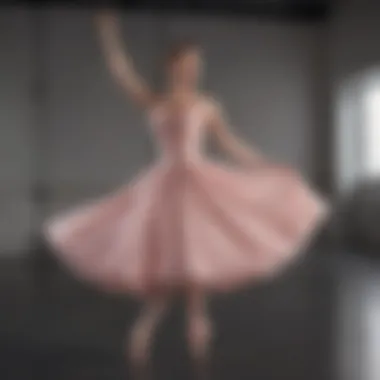
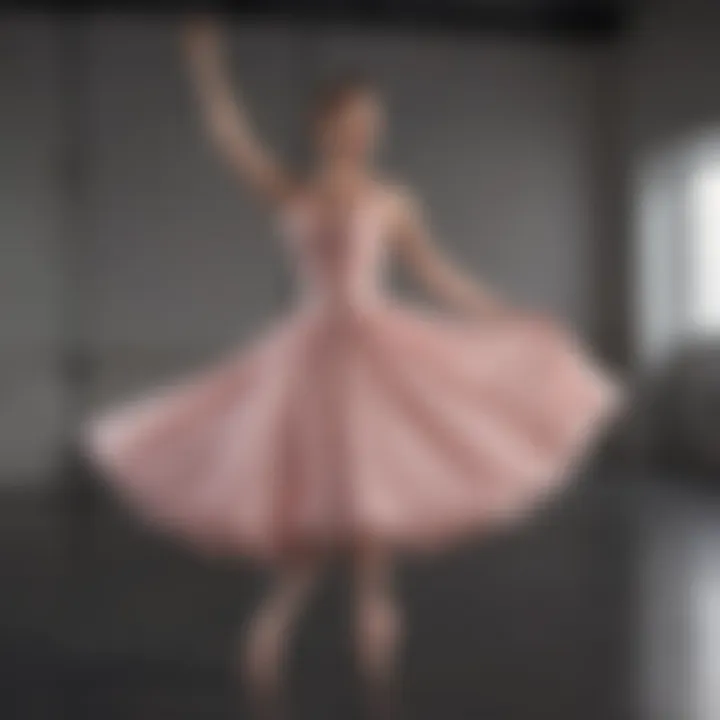
Intro
Ballet style dresses have a charm that transcends the ordinary. With origins rooted in the grace of classical ballet, these garments are not just attire; they are the embodiment of elegance, sophistication, and tradition.
The delicate ballet style dress, often reminiscent of a dancer's costume, beckons the wearer into a world where poise and beauty collide. It captures the essence of beautifully crafted movements, portraying a narrative of artistry through fashion.
In this guide, we will navigate through the intricate layers of history and design, shedding light on how these dresses have captivated hearts over generations. From understanding their structural nuances to exploring their modern interpretations, each aspect reflects a unique blend of artistry and functionality.
As we discover how to incorporate ballet style dresses into contemporary fashion, we'll also unravel their timeless relevance in today's wardrobe essentials. This guide aims to provide not only an appreciation of these iconic garments but also practical insights into styling, caring for them, and embracing their beauty in daily life.
Foreword to Ballet Style Dresses
Ballet style dresses hold a special place in the world of fashion. Their charm transcends mere clothing; they capture the essence of grace and elegance, often evoking the beauty seen on ballet stages around the globe. Understanding these dresses is not just about appreciating their aesthetic value but also recognizing how they have influenced broader fashion trends over time.
In this article, we aim to provide a comprehensive exploration of ballet style dresses. We’ll dive into their definition, historical context, and the unique elements that contribute to their allure. By examining the intricacies of these dresses, readers from various backgrounds—be they enthusiasts or casual observers—can gain insights into how these garments meld artistry with wearability.
Defining the Ballet Style Dress
A ballet style dress, often characterized by its fitted bodice and full skirt, is designed to exude an air of sophistication while allowing freedom of movement. The silhouette typically mimics the delicate lines of a ballet dancer, creating a striking visual that flatters many body types. It is usually made from lightweight fabrics that flow gracefully, enhancing the dress's overall effect.
Beyond just the physical attributes, the ballet style dress symbolizes femininity and grace. It embraces a blend of function and form, making it a versatile choice for various occasions, from casual outings to formal gatherings. The beauty of this dress lies in its ability to be both playful and elegant—truly a chameleon in a woman’s wardrobe.
Historical Context and Evolution
Tracing the origins of the ballet style dress takes us back to the world of ballet itself. The aesthetics of ballet have played a pivotal role in shaping fashion, particularly since the 19th century. As ballet made its way onto stages across Europe, it introduced audiences to a new standard of beauty. Costumes designed for performances influenced everyday fashion trends.
The evolution of the ballet style dress can be viewed in large part through significant moments in cultural history. For example, during the Romantic era, tutu-like skirts became popular, setting the stage for contemporary interpretations of dance-inspired fashion. Designers have since drawn from this rich heritage, reimagining the dress across various styles and seasons.
In the modern context, the ballet style dress finds a place in high fashion, often showcased in runway shows, and remains a staple in many women’s collections. It adapts to current trends—sometimes embodying the minimalist ethos, or other times boasting intricate embellishments and patterns. This adaptability speaks to the enduring appeal of ballet style dresses.
"Fashion can be fleeting, but some styles—like the ballet dress—maintain their timeless quality, proving that true elegance never goes out of style."
Through this survey of ballet style dresses, we uncover not just their aesthetic appeal, but their significance and place within the larger narrative of fashion history. Embracing the past informs our understanding of the present and shapes our choices in the future.
Key Characteristics of Ballet Style Dresses
Understanding the key characteristics of ballet style dresses is essential to grasp their enduring charm and versatility. These dresses are not merely garments but an embodiment of grace, elegance, and a hint of whimsy. They possess unique features that allow them to adapt to various occasions while remaining a staple in both historical and contemporary fashion.
Silhouette and Structure
The silhouette of a ballet style dress is one of its most defining traits. Often characterized by a fitted bodice and a flowy skirt, this design mirrors the graceful lines created by ballet dancers. When one slips into a ballet dress, there's an instant feeling of poise. A-line skirts, for instance, flatter a variety of body types, creating a subtle sculpting effect. To maintain the shape, these dresses are frequently structured with layers or involve crinoline—adding volume without weight. This structure doesn’t just enhance functionality but also conveys a narrative of movement and artistry.
Materials and Fabrics
Choosing the right fabric is pivotal in creating the perfect ballet dress. Depending on the desired outcome, the fabric choice influences the overall aesthetic and functionality of the garment. Three fabrics stand out in this realm:
Silk
Silk is synonymous with luxury and elegance. Its smooth texture drapes beautifully, allowing the dress to flow effortlessly. In addition to its aesthetic appeal, silk also has a natural sheen that catches the light, enhancing the allure of the dress. However, it requires delicate care—splashing a bit of water on it might lead to stains if not treated right away. Furthermore, silk can be pricey, which makes it a beloved choice for special occasions rather than everyday wear.
Tulle
Tulle is a dream fabric for ballet dresses, known for its lightweight and airy qualities. It conveys a sense of fairy-tale magic, especially when layered to create a voluminous skirt. Tulle dresses have been pivotal in theatrical designs and dance costumes. Its ability to hold shape allows for unique silhouettes, yet it can easily snag on objects, requiring careful handling. Despite that downside, its affordability and vast color selection make it a popular choice for those looking for a playful touch.
Chiffon
Chiffon brings a soft, flowing element to ballet dresses, making it incredibly popular for contemporary designs. It is slightly sheer, which allows for layering and creates an ethereal appearance. Chiffon's versatility can suit both casual and formal settings. However, it might require a lining to prevent translucency issues, especially in brighter hues. Chiffon also wrinkles easily, meaning it needs occasional ironing to maintain a polished look—but when styled right, the effort is well worth the outcome.
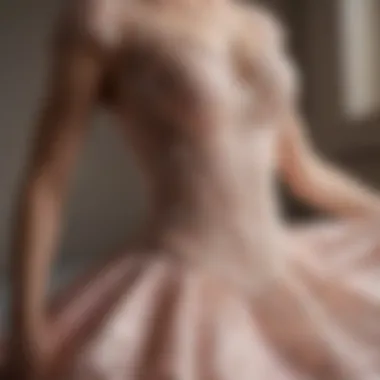
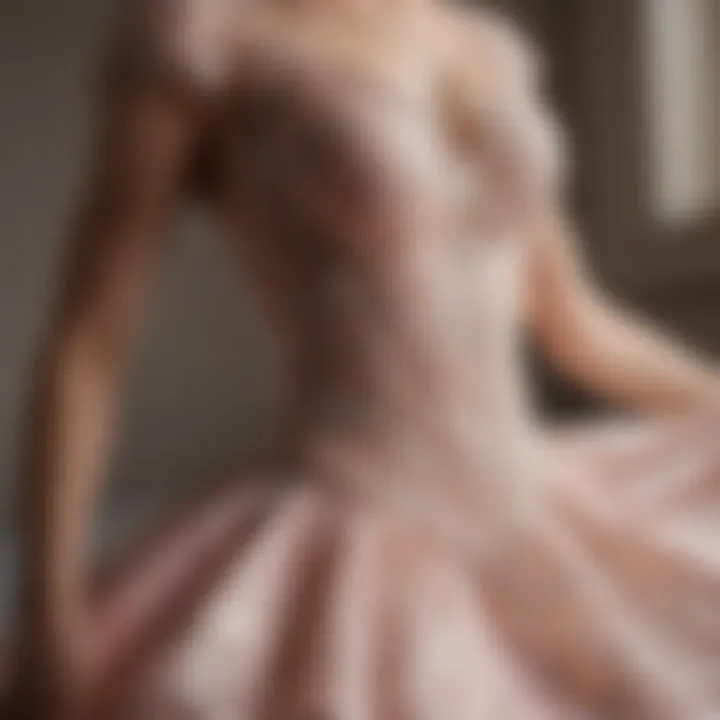
Color Palettes and Patterns
The color palettes and patterns of ballet style dresses add an essential layer of depth to their design. Traditionally, ballet attire favors pastels—think soft pinks, blues, and whites—which evoke innocence and grace. However, contemporary designs have expanded this range significantly. Designers now experiment with bold colors, intricate patterns, and even unique textural combinations.
Some possible patterns that often catch the eye include floral designs, polka dots, and abstract prints. These patterns offer an opportunity for self-expression, making each dress unique. Additionally, seasonal trends influence color choices; deep hues are often prominent in fall and winter, while bright colors take center stage in spring and summer.
Ultimately, the ballet dress not only satisfies the visual senses but also resonates on an emotional level, reflecting the wearer’s personality and style.
"The beauty of a ballet style dress lies not just in its aesthetics but in the narrative it weaves even before a single step is taken. It encapsulates elegance, creativity, and the spirit of dance itself."
Ballet Style Dress in Fashion History
The ballet style dress has carved a unique niche in the landscape of fashion history. Its significance isn’t just about aesthetics; it embodies a fusion of art, cultural expression, and innovative design throughout the ages. As we tread through the annals of time, we observe how these garments have influenced far more than just the clothing choices of performers. This section will delve into the influence on haute couture and highlight iconic moments in cinema and media, shedding light on their extensive impact within the broader fashion context.
Influence on Haute Couture
The ballet style dress has often acted as a muse for haute couture designers. Think back to fashion legends like Christian Dior and Yves Saint Laurent, who have drawn inspiration from the delicate lines and ethereal qualities of ballet costumes. The confluence of dance and high fashion is most evident in collections that marry functionality with elegance, transcending the stage to make a grand appearance on runways worldwide.
These dresses often feature sumptuous fabrics like silk, tulle, and chiffon, which enhance the fluidity and movement typical of ballet. The silhouettes they create evoke the gracefulness of a dancer's posture and the freedom of movement associated with ballet performances. Designers such as Valentino and Jean Paul Gaultier have famously riffed off the classic tutu, reimagining it within a context that resonates with contemporary audiences.
Moreover, the ballet style serves a practical purpose in haute couture as well. The strong ties between performance garments and fashion allow for dresses that are not only visually striking but also offer freedom of movement. This balance is rare in high fashion and speaks to the ongoing relationship between these two worlds.
Iconic Moments in Cinema and Media
Cinema has played a monumental role in propagating the image of the ballet style dress to a broader audience. Films like Black Swan and The Red Shoes not only produced breathtaking visuals but also underscored the profound emotional narratives connected to ballet, revealing its depth and influence in fashion.
In Black Swan, Natalie Portman's transformation reflects the juxtaposition of innocence and sensuality, making her costume a pivotal element of the story. The white swan dress, delicate and pure, contrasts sharply with the fierce black dress she wears in a moment of personal reckoning. This visual dialogue between clothing and character offers insight into the cultural weight that ballet dress can carry.
Furthermore, icons like Audrey Hepburn in Funny Face popularized ballet-inspired fashion in mainstream culture. The elegance of Hepburn’s style during the film reignited the ballet dress trend, promoting it as an everyday fashion staple.
"Ballet style dresses are more than garments; they are stories woven into fabric that communicate the nuances of human emotion and elegance."
Both haute couture influences and cinematic representations have solidified the ballet dress's status as a timeless classic that continues to inspire and evolve within the ever-changing tides of fashion. As we explore this exquisite garment's enduring presence, we find a reflection of society's values, aspirations, and artistic visions that fuel its legacy.
Ballet Style Dress in Contemporary Fashion
The ballet style dress continues to resonate in the fashion world today, dynamically influencing modern trends with its timeless elegance. This section explores how contemporary designers and fashion enthusiasts are interpreting this classic garment, emphasizing its relevance in today's style landscape.
Current Trends and Adaptations
In the world of ballet-inspired fashion, two prominent currents stand out: minimalist design and the use of eco-friendly materials. Each trend highlights unique attributes of ballet style dresses and their adaptability to modern aesthetics.
Minimalism in Design
Minimalism as a design approach strips away excessive embellishments, focusing on clean lines and understated elegance. This style has embraced the ballet dress, imbuing it with a sophistication that resonates with many fashion-forward individuals today. The key characteristic of minimalism in ballet dresses is simplicity, which allows the silhouette to speak for itself without distraction.
One of the unique features of minimalist ballet style dresses is the use of solid colors and subtle textures. This approach simplifies wardrobe choices, making it easier for wearers to mix and match with other pieces, ensuring versatility and practicality in dressing. The advantages of embracing minimalism include not only flexibility in pairing with accessories but also a timeless quality that avoids fleeting trends.
Eco-friendly Fabrics
As fashion grows increasingly conscious of its impact on the planet, eco-friendly fabrics have found a place within the ballet style dress realm. These materials, such as organic cotton and recycled polyester, are celebrated for their sustainability. Utilizing eco-friendly fabrics reflects a commitment to ethical fashion, making it a popular choice among environmentally aware consumers.
The unique feature of eco-friendly fabrics lies in their ability to maintain the soft, flowing qualities essential to the ballet style dress while being manufactured with lesser environmental footprint. Advantages include not only a positive impact on the environment but also enhanced comfort, as many eco-friendly materials prioritize breathability and wearability. However, the disadvantages may include higher costs and sometimes limited selection.
Styling Tips for the Modern Wearer
Incorporating a ballet style dress into a daily wardrobe can be an art in itself. For those looking to seamlessly blend this classic piece with contemporary flair, here are some practical styling tips:
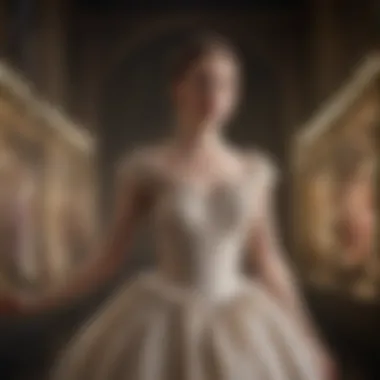
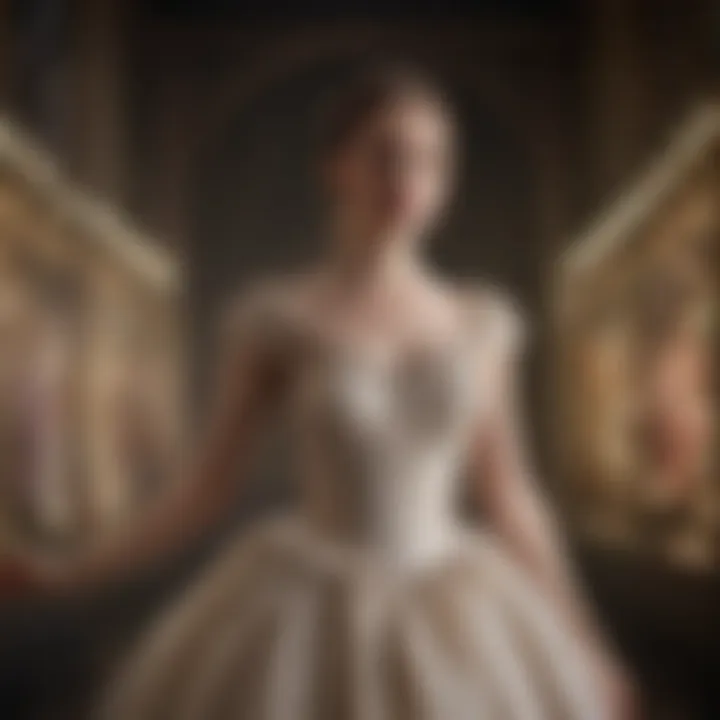
- Balance Proportions: Pair the fitted bodice of the dress with oversized outerwear like a relaxed-fit blazer or a cozy cardigan to create a balanced look.
- Footwear Matters: Opt for ballet flats for a classic look or ankle boots for an edgier approach. The choice of shoes can completely alter the vibe of the outfit.
- Accessorize Wisely: Choose accessories that compliment the graceful lines of the dress. Delicate jewelry and soft bags work harmoniously, while bold pieces can create a striking contrast.
- Layering: Don’t shy away from layering. Incorporating items like turtlenecks under a ballet style dress can introduce warmth and texture, enriching the outfit without sacrificing style.
Ultimately, the ballet style dress, with its rich history and evolving modern adaptations, remains a canvas for personal expression and creativity.
Cultural Significance of Ballet Style Dresses
Ballet style dresses resonate with a rich tapestry of cultural meaning, transcending mere fashion to touch on artistry, identity, and expression. These garments not only symbolize grace and elegance, but they also serve as crucial vessels for representing the spirit of ballet itself. They embody the hard work and artistry of dancers, resonating with the audience far beyond the stage.
Representation in Dance and Ballet
In the world of dance, the ballet style dress holds an almost sacred status. These dresses are not simply clothing; they are a representation of the discipline and the intricacies of ballet. When you think of a ballet performance, images of tutus, leotards, and flowing skirts immediately come to mind. These outfits do more than just enhance the dancer's movements; they are a critical element in storytelling through dance. The way a dress catches the light or swirls during a pirouette can create breathtaking visuals, enhancing the performance experience.
Here are some key aspects of how ballet style dresses represent dance:
- Movement and Fluidity: The design and structure of these dresses allow for maximum freedom of movement while also highlighting the dancer's form. This aspect is vital, as it adds layers of interpretation to the choreography.
- Symbol of Dedication: Each stitch and fabric choice tells a story of countless hours spent perfecting technique. These dresses signify dedication, training, and the emotional intensity required in ballet.
- Cultural Heritage: Ballet itself has a long history, akin to a cultural artifact. The dresses associated with it often reflect traditional aesthetics, evoking the origins while also influencing modern interpretations.
"In ballet, the dress is not just something to wear, but a canvas that narrates a dancer’s journey."
Ballet Style in Global Fashion
The ballet style dress has ventured far beyond the confines of dance—the influence it has exerted on global fashion is nothing short of monumental. Designers from all corners of the world have drawn inspiration from the elegance inherent in these garments. From Paris to Tokyo, the allure of ballet has informed countless collections.
Consider the following points highlighting this influence:
- Runway Royalty: Major designers like Chanel and Dior have incorporated elements of ballet into their collections. Whether through soft pastels that echo the ethereal quality of ballet or silhouettes reminiscent of classic tutus, the connection is tangible.
- Street Style: The ballet aesthetic isn’t limited to the runway. In urban environments, fashion enthusiasts have taken cues from ballet dresses, pairing them with modern streetwear elements. Think ballet skirts worn with chunky sneakers or understated leotards layered beneath oversized jackets.
- Cultural Fusion: Different cultures blend ballet inspirations with local styles, creating unique variations. For instance, in India, there’s been the introduction of ballet-influenced lehengas that marry traditional designs with the grace of ballet dress styles.
- Fashion Statements: The revival of ballet style dresses in contemporary fashion pushes boundaries, allowing wearers to make bold statements about elegance juxtaposed against modernity. The dress becomes a symbol of both nostalgia and innovation.
In summary, ballet style dresses carry a cultural significance that spans performance, fashion, and global aesthetics. They encapsulate a bridge between rigorous artistry and the dynamic world of style, enabling individuals around the world to partake in this rich narrative, whether on stage or in daily life.
Event Suitability for Ballet Style Dresses
When considering any garment, one paramount question arises: What occasions are suited for this particular style? In the case of ballet style dresses, their versatility extends across a wide spectrum of events, making them an invaluable addition to any wardrobe. With their elegance and charm, these dresses can seamlessly transition from formal gatherings to more casual outings, providing both aesthetic appeal and wearer comfort.
Formal Occasions
Ballet style dresses shine in formal settings. Their flowing silhouettes and intricate designs contribute to an air of sophistication and grace, making them ideal for events such as weddings, galas, or evening soirees. Here are some key points to consider:
- Fabric Matters: Opt for luxurious materials like silk or satin that drape beautifully and elevate the dress's overall presentation.
- Complementary Accessories: Pair with elegant heels or ballet flats that resonate with the dress's aesthetics, avoiding clunky footwear that may detract from the graceful lines of the dress.
- Color Selection: Consider muted tones such as blush pink or deep navy, which exude class. Additionally, don’t shy away from running a little bold with jewel tones for a touch of modern flair.
Ballet dresses also thrive in environments where movement and fluidity are appreciated, making them suitable for functions that incorporate dance or performance.
"A ballet style dress isn’t just an outfit; it’s a mood that carries charm every time you step into a room."
Casual Wear and Adaptability
The true beauty of ballet style dresses lies in their adaptability. They can effortlessly morph into daily wear with the right styling. Here’s how:
- Layering Options: Incredible versatility comes from how you layer the dress. A light denim jacket can transform a formal dress into a chic daytime outfit.
- Footwear Flexibility: Swap the heels for a pair of stylish sneakers or soft ballet flats. This not only brings comfort but also puts a fun twist on the standard look.
- Accessorization: Play around with accessories. A casual crossbody bag and simple bracelets can take the dress from a formal vibe to a relaxed outing a trip to the park or a coffee date.
In terms of fabric, lighter options like cotton blends or semi-sheer materials can enhance comfort, making these dresses practical for everyday wear while still maintaining an air of grace.
Ultimately, whether it's a posh gala or a laid-back brunch with friends, the ballet style dress proves itself to be more than just a statement piece; it's a canvas for personal expression, capable of adapting to any scenario.
Accessorizing the Ballet Style Dress
Accessorizing a ballet style dress is akin to putting the cherry on top of a sundae; it’s the finishing touch that elevates elegance to a whole new level. The beauty of these dresses lies in their simplicity, yet with the right accessories, one can add personal flair and take the overall look from ordinary to extraordinary. The careful selection of accessories not only enhances the garment’s visual appeal but also plays a crucial role in expressing individual style. A well-thought-out accessory choice can bridge the gap between a casual day out and a sophisticated evening affair, all the while maintaining the poise characteristic of ballet-inspired fashion.
Footwear Choices
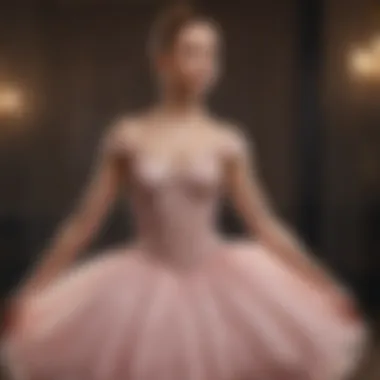
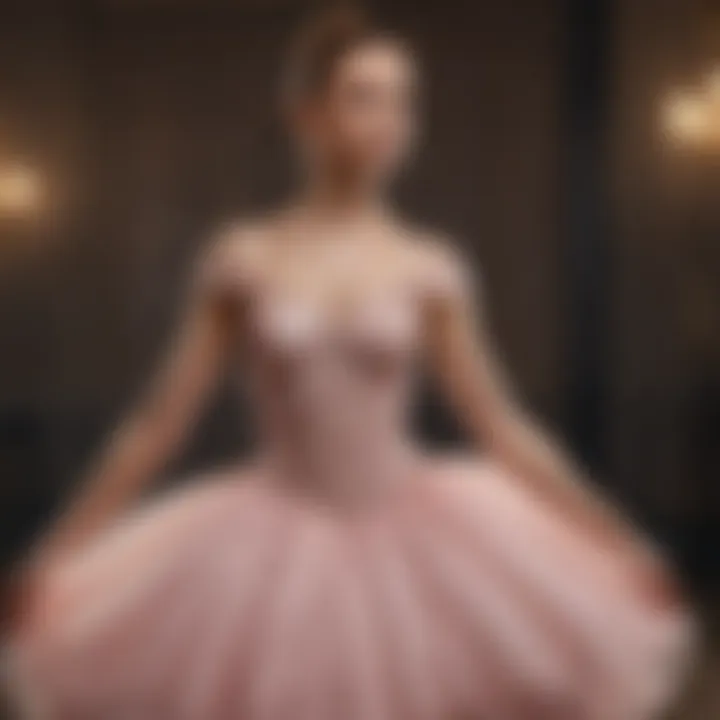
Ballet Flats
Ballet flats are to ballet style dresses what sunshine is to a summer's day; they simply belong together. Their defining characteristic is their elegant simplicity, which seamlessly complements the soft lines of a ballet dress. Made typically from soft leather or fabric, these shoes provide a level of comfort that allows for movement while ensuring a graceful aesthetic.
The unique feature of ballet flats is their versatility. They can be dressed up or down, making them a favorite among wearers. These shoes are particularly advantageous for daytime events or casual gatherings. However, one should consider that they do not provide much elevation or arch support. In certain scenarios, especially formal events, some might find them less suitable than higher-heeled options.
Heels
On the other hand, heels present an irresistible allure to many, drawing attention and providing a sophisticated edge when styled with ballet dresses. The key characteristic of heels is their ability to elongate the leg line, contributing to a statuesque appearance—something many aspire to achieve.
The unique feature of heels is the instant glamour they add. They can transform a simple ballet dress into an evening ensemble perfect for upscale gatherings or glamorous soirées. The disadvantage, however, is that not everyone finds heels comfortable for extended wear, which can be a significant consideration when choosing footwear. For those who savor the elegance heels bestow upon their outfits, they can indeed be a popular choice for adding flair and dramatic presence.
Jewelry and Other Accessories
When it comes to jewelry and additional accessories, less can often be more. Ballet style dresses inherently carry an air of sophistication, so one should aim for accessories that accentuate this without overwhelming it. Delicate pieces such as pendant necklaces or simple pearl earrings can create a harmonious balance.
Handbags also play a pivotal role in the overall aesthetic. Opting for a clutch or a sleek crossbody can add a modern touch without compromising the classic vibe of the dress. With these accessories, the key is to keep them in sync with the dress’s colors and style.
Care and Maintenance of Ballet Style Dresses
Taking care of a ballet style dress is not just about preserving its fabric; it's about maintaining the essence and charm that these garments emanate. The delicate nature of the materials used, combined with the intricate designs, means that care methods should be considered a significant part of ownership. Proper maintenance enhances the life of the dress, ensuring that it continues to exude elegance and grace each time it is worn.
Understanding how to clean and store these dresses can yield benefits far beyond aesthetic appeal. Well-maintained dresses not only look good but also feel more comfortable when worn; no one enjoys a scratchy, worn-out garment. In addition, there's a certain satisfaction that comes from knowing you've preserved something beautiful and invested in quality fashion. Careful practices can prevent premature wear and tear, which ultimately saves on costs and keeps your wardrobe stylish for many seasons.
Cleaning Techniques
Maintaining the integrity of a ballet style dress starts with one key area: cleaning. Due to varying fabrics, cleaning methods can differ significantly.
- Hand Washing: This is the gentlest option, especially for silk and chiffon garments. Fill a basin with cold water and turn the dress inside out. Use a mild detergent designed for delicate items. Gently agitate the water to cleanse the fabric without any excessive twisting or wringing.
- Machine Washing: If the label indicates machine washability, opt for a mesh garment bag to protect your dress from hooks and zippers. Select a gentle cycle with cold water and always use a mild detergent.
- Dry Cleaning: For dresses that feel too delicate, it's better to leave the cleaning to professionals. Many fabrics, like tulle or intricate beading, can be easily damaged by at-home cleaning methods.
Important Note: Avoid using bleach or fabric softeners, as these can ruin delicate fibers.
"The best way to clean a dress is not to wait until it is dirty. A little maintenance goes a long way."
Storage Guidelines
Keeping your ballet style dress in optimal condition extends beyond just cleaning. Storage practices are crucial. Here are some guidelines to ensure longevity:
- Hang or Fold: If you have space, hanging is ideal. Use padded hangers that provide even support to prevent stretching. If folding is necessary, ensure you place tissue paper in between to avoid crease marks.
- Breathable Garment Bags: For longer storage, opt for breathable garment bags rather than plastic covers. Plastic traps moisture, which can lead to mildew or discoloration.
- Dark and Cool Spaces: Store your dresses in places that are away from direct sunlight. Light can fade colors, particularly pastels and whites. An air-conditioned closet is often the best choice.
- Regular Checks: Even when neatly stored, it’s wise to check on your dresses every few months. This way, you can catch any issues like moth damage or mildew before they escalate.
By following these practices for care and maintenance, you can ensure that your ballet style dresses remain as stunning as the day you acquired them. Whether for a special occasion or simply everyday wear, investing a bit of time into these procedures pays off in terms of both appearance and longevity.
Epilogue
The importance of this article lies in the illuminating journey through the fascinating realm of ballet style dresses. By weaving together strands of history, design, and current fashion relevance, we’ve painted a comprehensive picture of why these garments hold such a prominent place in both the fashion world and cultural fabric. From their inception to modern adaptations, ballet dresses tell stories of elegance and artistry, capturing the essence of femininity and grace.
The Enduring Appeal of Ballet Style Dresses
Ballet style dresses have a charm that doesn’t wane with passing trends. Their enchanting silhouettes gracefully echo the contours of the ballet dancer’s form, making them universally flattering. Many women find that slipping into one of these dresses evokes a sense of poise reminiscent of a prima ballerina, transforming an ordinary day into a performance. The flowing tulle or silk fabric sways with every movement, adding a dramatic flair that’s hard to resist.
Not only are these dresses visually appealing, but they also encapsulate a kind of nostalgic innocence that resonates with many. Often associated with childhood dreams of becoming a dancer, they bridge the gap between youthful wonder and sophisticated elegance. Moreover, their versatility allows for various styling possibilities, whether it be paired with dainty ballet flats for a casual outing or with heels for a formal affair. Many find that these dresses manage to strike the right balance between timelessness and trendiness, making them staple pieces in a fashion-savvy wardrobe.
Future Trends in Ballet Inspired Fashion
Looking ahead, the ballet style dress is set to evolve in exciting ways as fashion continues to adapt to contemporary preferences. The growing shift toward sustainable fashion has led designers to explore eco-friendly materials that maintain the iconic aesthetic while being kinder to the planet. Fabrics made from recycled materials or natural fibers, like organic cotton and linen, are gaining traction and reflect a conscientious approach to style.
Minimalistic designs are also on the rise, with a focus on clean lines and understated elegance that mirrors the simplicity of ballet’s beauty. This movement embraces neutral palettes and subtle embellishments, catering to those who favor a more understated yet chic look.
Furthermore, digital fashion and virtual runways could redefine how we approach ballet style dresses. As virtual fitting rooms become commonplace, expect to see innovative designs that incorporate augmented reality elements, allowing buyers to visualize how a dress would flow on their own bodies.
"Ballet style dresses are more than just a fashion statement; they’re a celebration of artistry, grace, and self-expression."
In summary, ballet style dresses are not just garments; they are an enduring symbol of elegance that continues to inspire current and future fashion trends. They remind us that beauty exists in both movement and stillness—a dance that will never go out of style.







